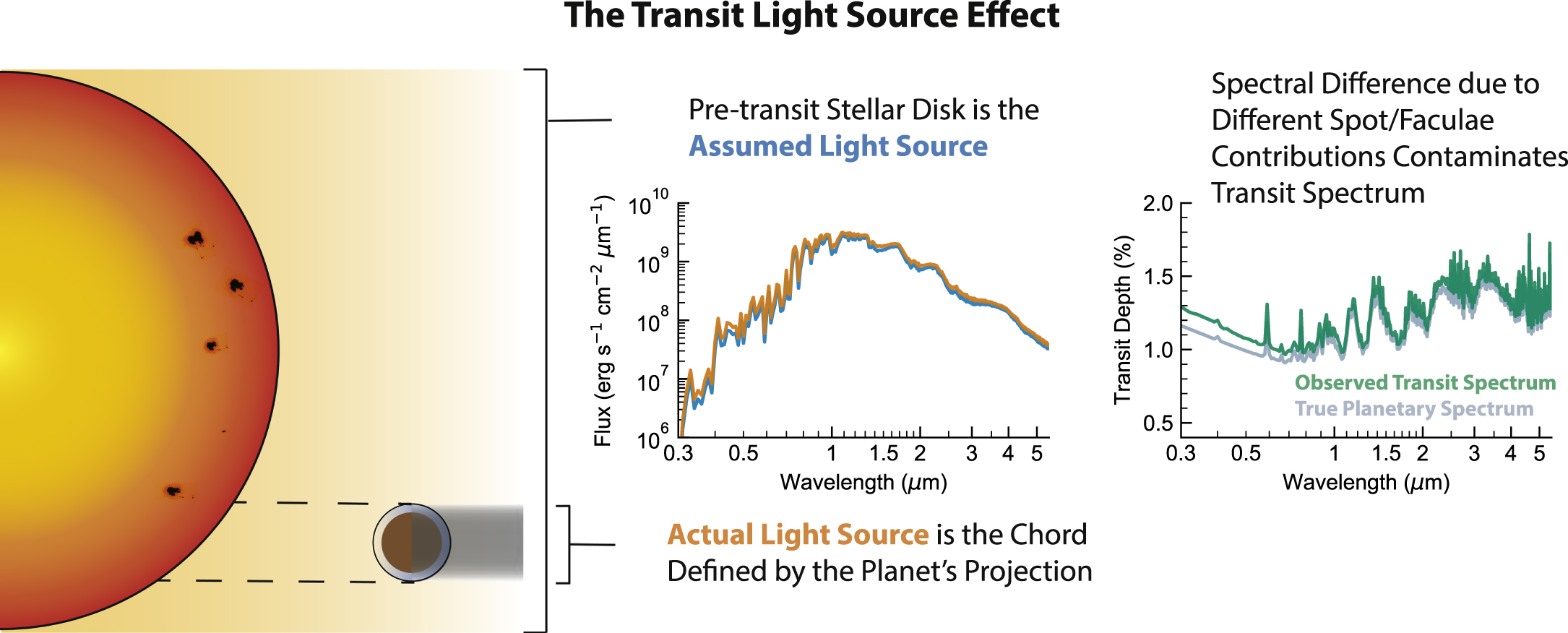Research
My current research focuses on implementing statistical methods to effectively mitigate stellar contamination in transmission spectroscopy, opening the door to more accurate characterizations of exoplanetary atmospheres.
Since the launch of NASA’s James Webb Space Telescope (JWST), the field of exoplanet atmosphere characterization has made exceptional advances. Transmission spectroscopy now allows astronomers to detect molecules and clouds on all sorts of exoplanets, offering insights into planet formation and migration history and will ultimately allow scientists to answer: are there any habitable worlds out there?
Since the launch of NASA’s James Webb Space Telescope (JWST), the field of exoplanet atmosphere characterization has made exceptional advances. Transmission spectroscopy now allows astronomers to detect molecules and clouds on all sorts of exoplanets, offering insights into planet formation and migration history and will ultimately allow scientists to answer: are there any habitable worlds out there?

Source: NASA
However, this process is complicated by stellar contamination—variability and heterogeneities like spots on the host star—which can mimic or obscure the signals from planetary atmospheres. Physical models used to correct for this are frequently oversimplified, while more accurate, physics-based models are currently too computationally demanding to use broadly.

Source: Rackham, Benjamin V., Dániel Apai, and Mark S. Giampapa. "The transit light source effect: false spectral features and incorrect densities for M-dwarf transiting planets." The Astrophysical Journal 853.2 (2018): 122
My current work aims to overcome these challenges by implementing Gaussian Processes into the atmospheric retrieval pipeline. Rather than relying solely on physical models, I am implementing a flexible, data-driven framework that can effectively model the unknown and complex stellar signals present in transmission spectra. Gaussian Processes are flexible statistical models that can capture complex patterns in data without assuming a specific form, making them a powerful tool to characterize stellar noise in transmission spectra. (Check out this excellent introduction to GPs.)
Ultimately, the goal of this work is to push the boundaries of exoplanet atmospheric characterization by implementing novel statistical frameworks that can robustly disentangle planetary signals from stellar contamination.
Results coming soon.
Ultimately, the goal of this work is to push the boundaries of exoplanet atmospheric characterization by implementing novel statistical frameworks that can robustly disentangle planetary signals from stellar contamination.
Results coming soon.
Past Research
During my undergraduate years at UC Berkeley, I worked with Dr. Ian Czekala to search for circumbinary star systems through cross correlation techniques with data from the Automated Planet Finder at Lick Observatory. I joined the Berkeley SETI Research Center, working alongside Howard Isaacson to develop an optical laser search algorithm as part of the Breakthrough Listen search for technosignatures (check out our paper here). I also had the privilege of working at Caltech’s LIGO lab, where I worked with Dr. Katerina Chatziioannou to study the spin parameters of binary black hole mergers through gravitational wave data (check out our paper here).